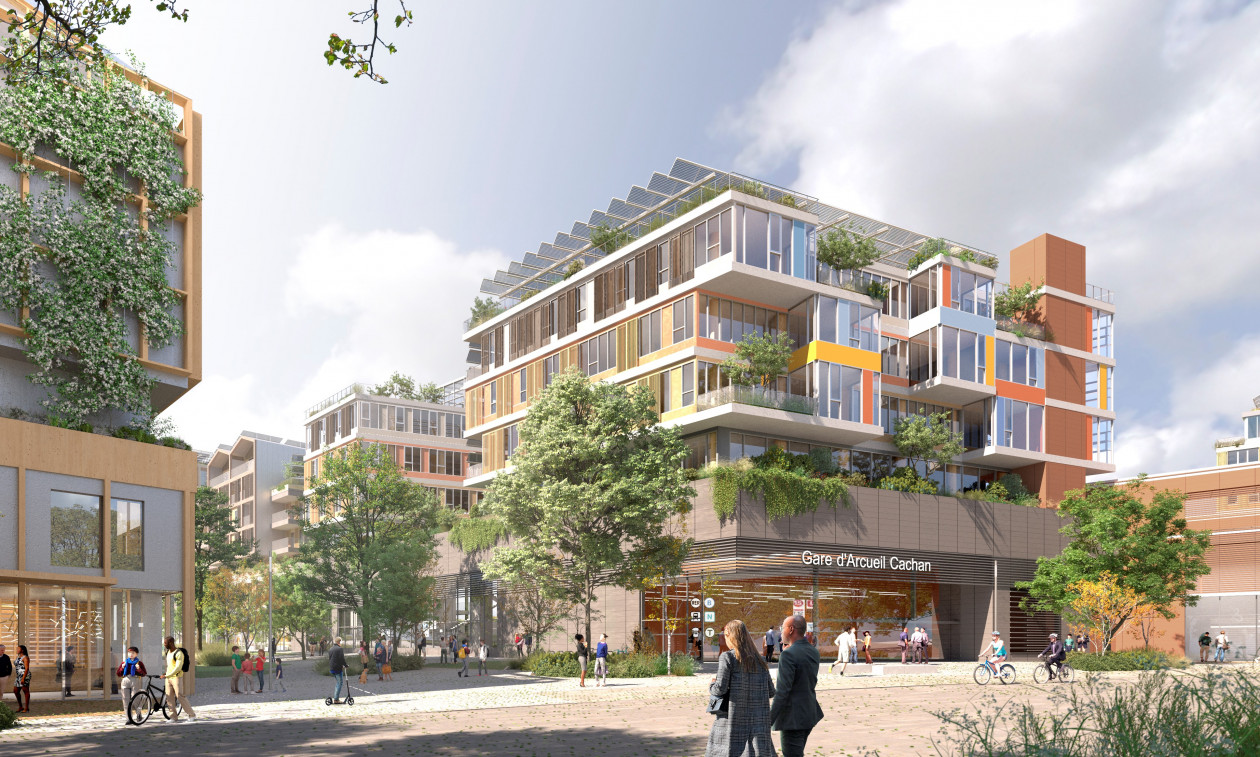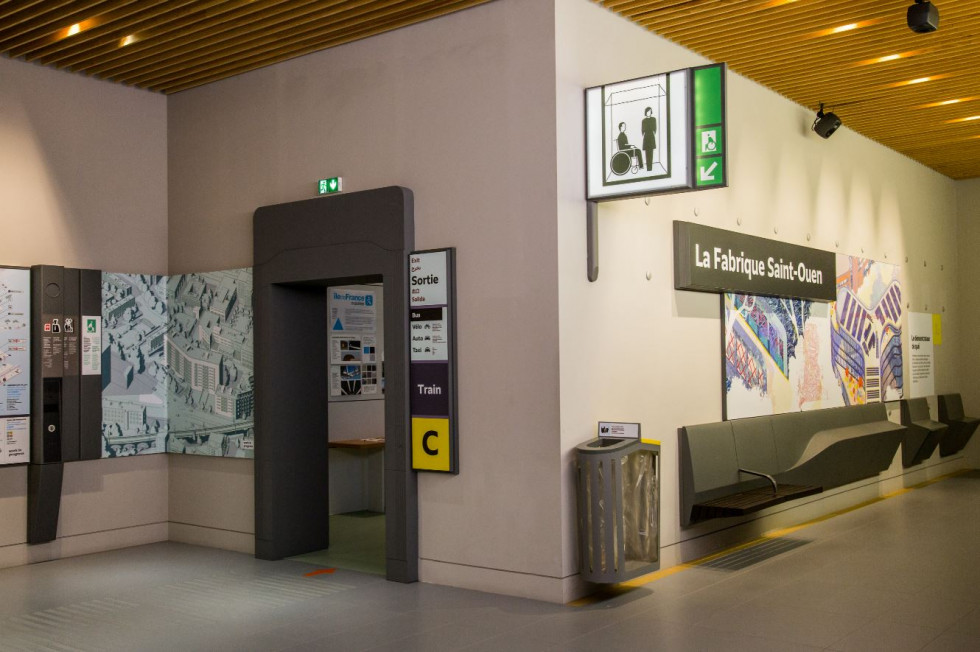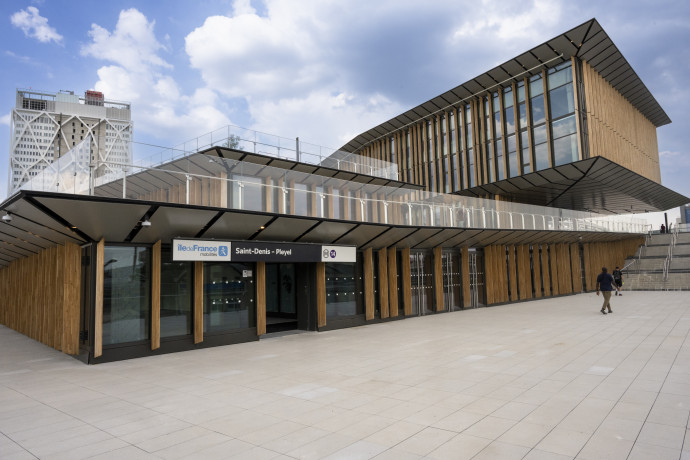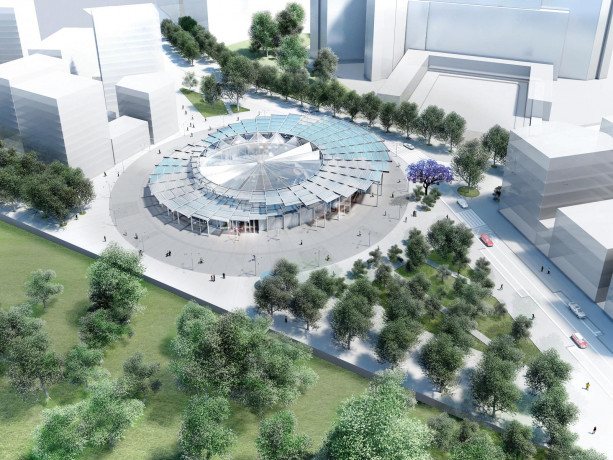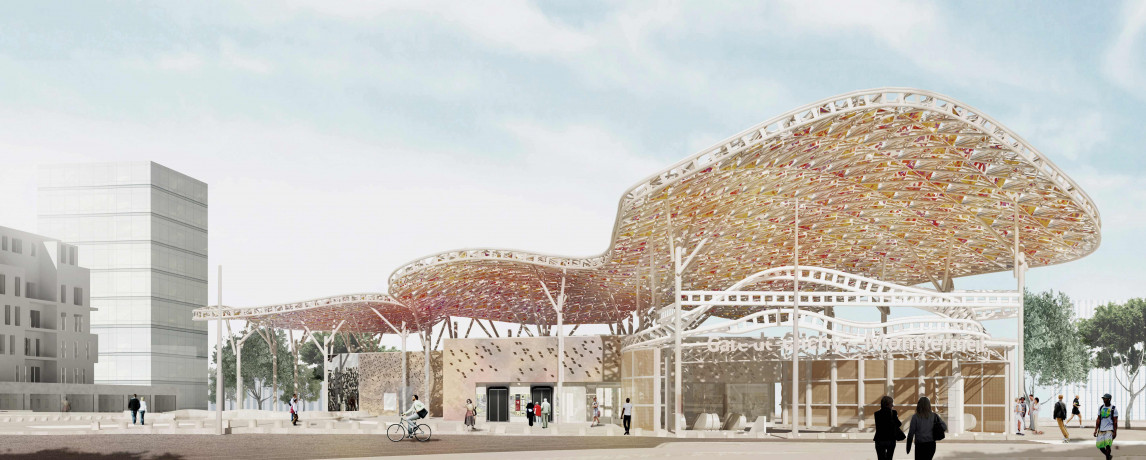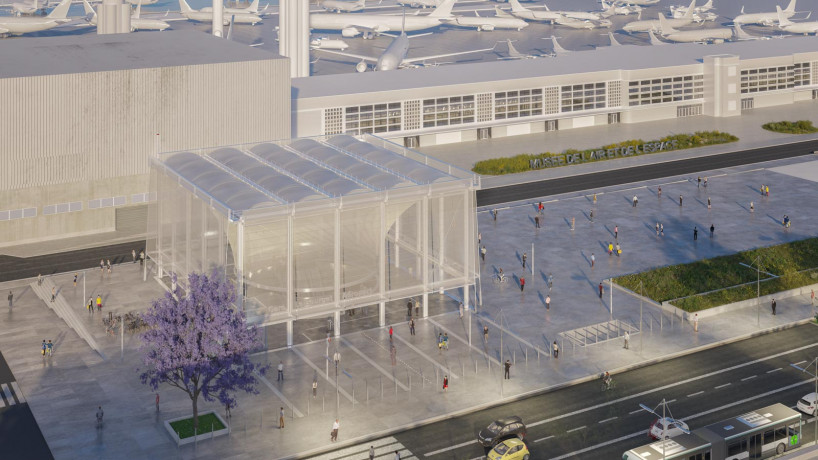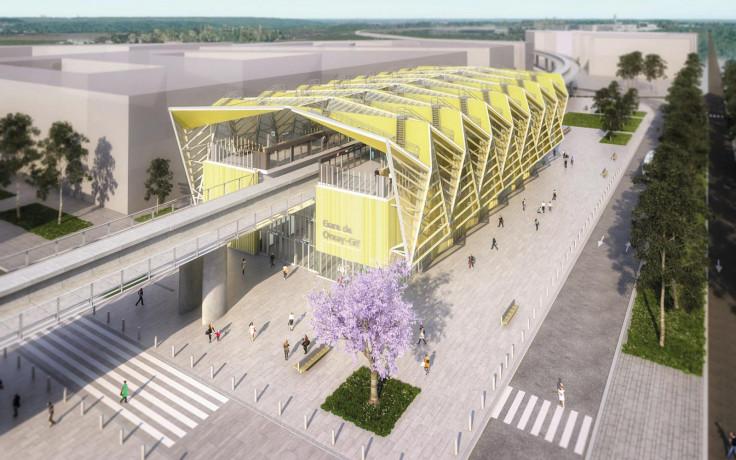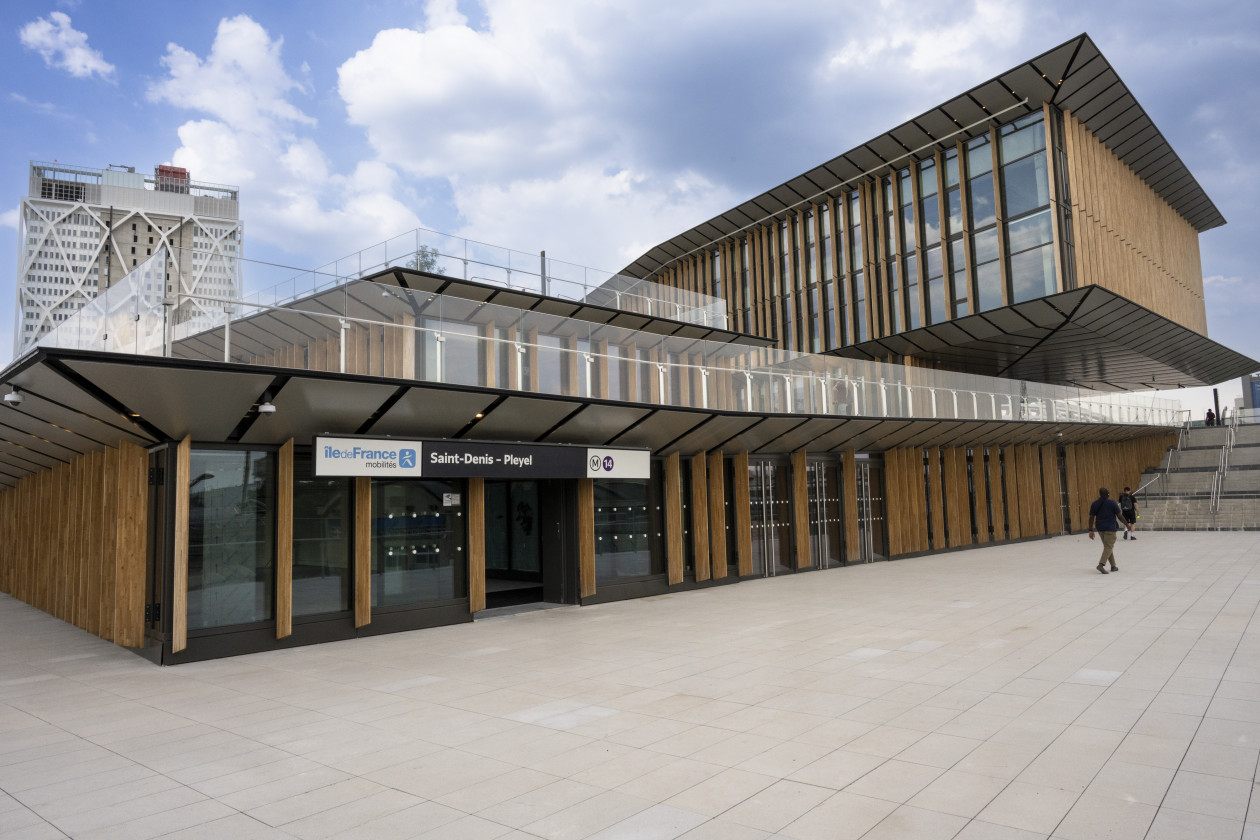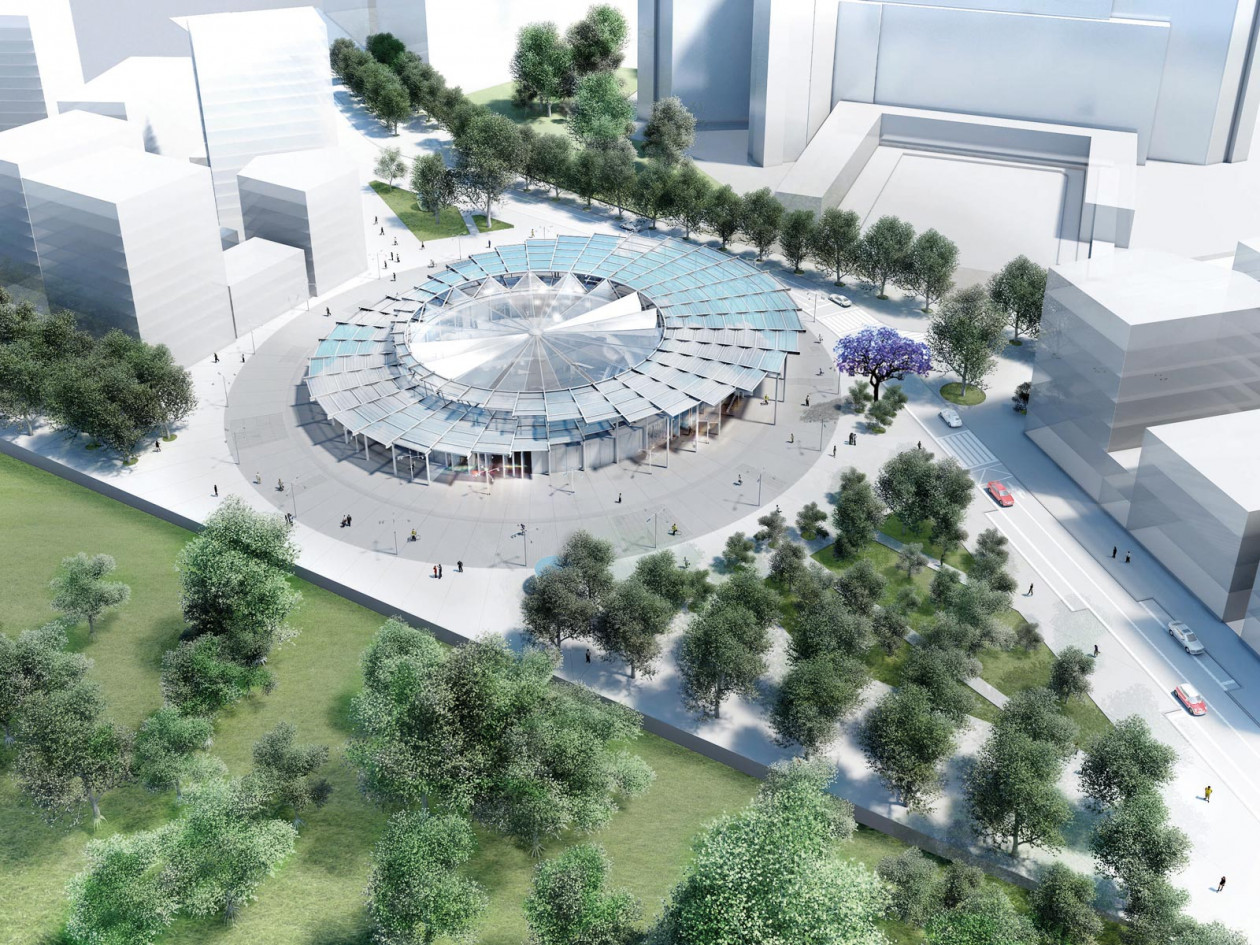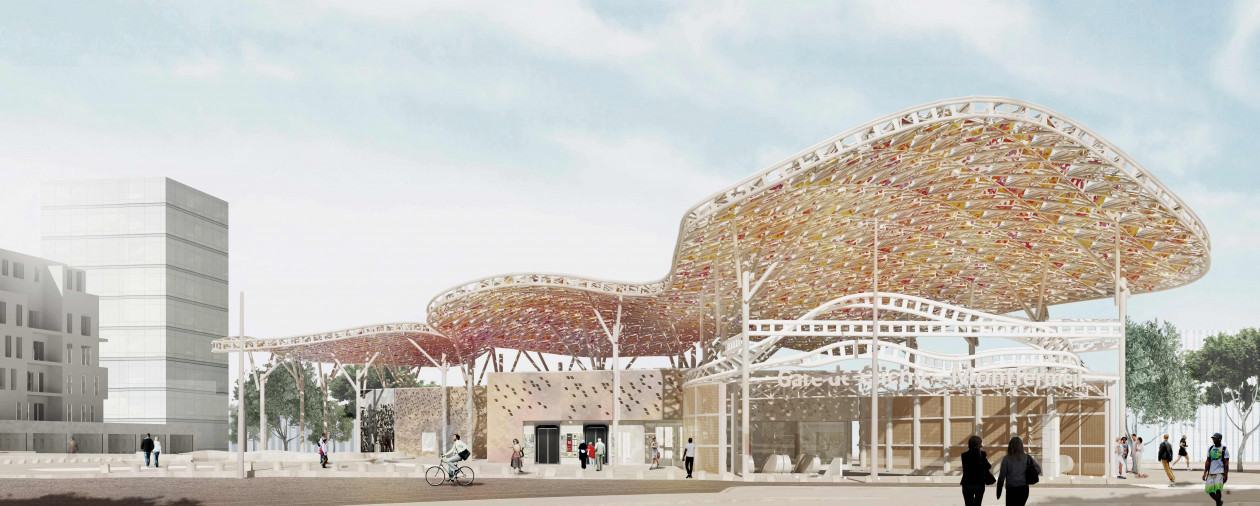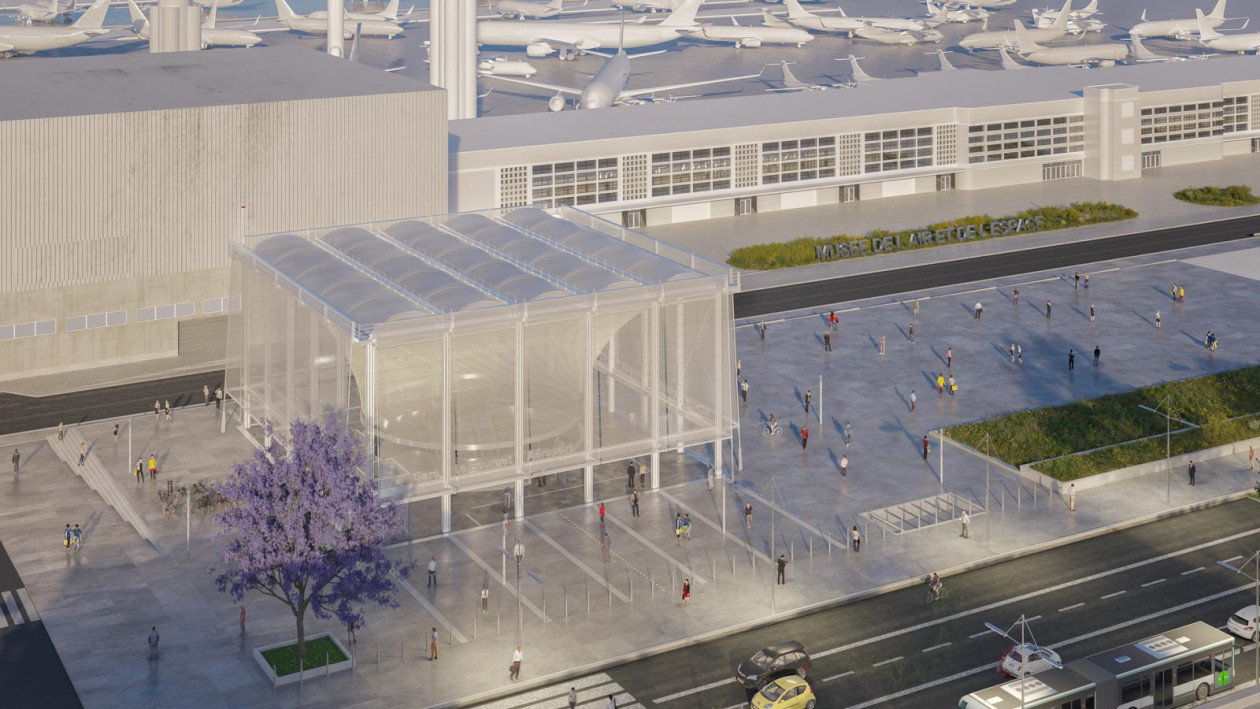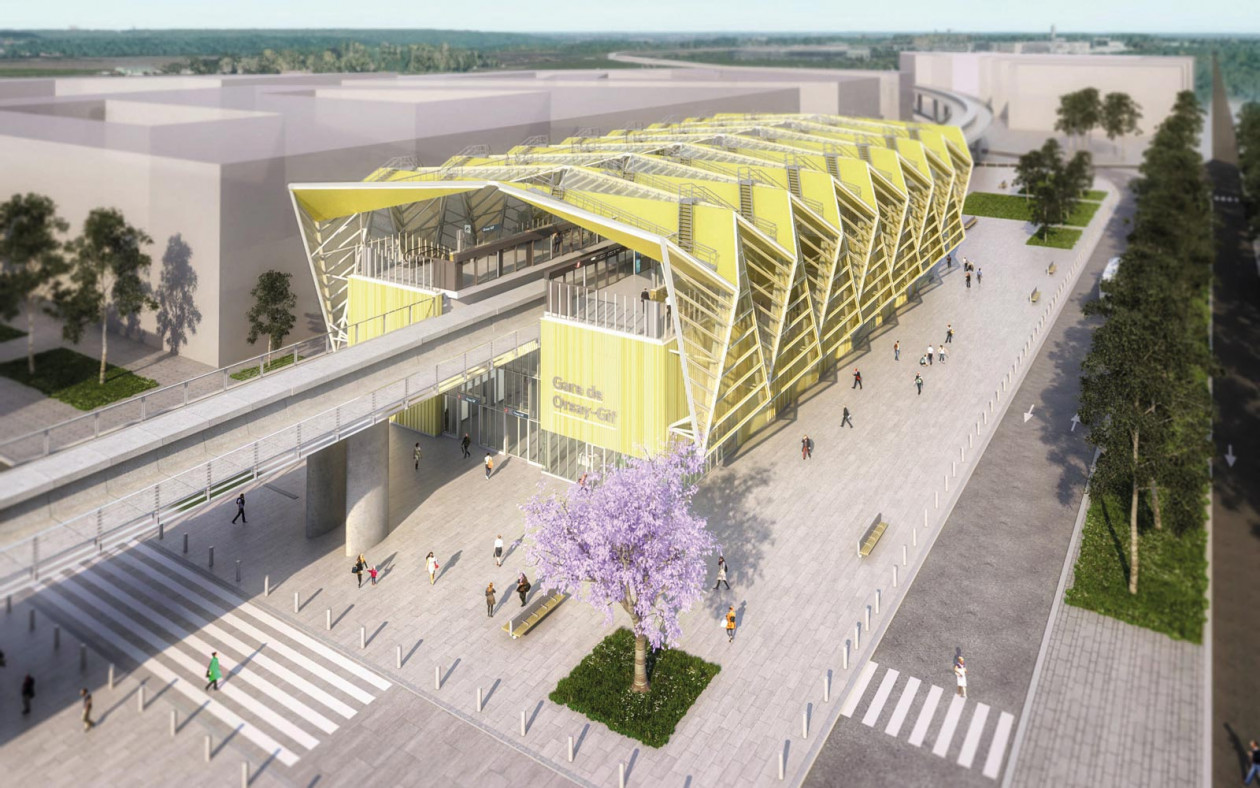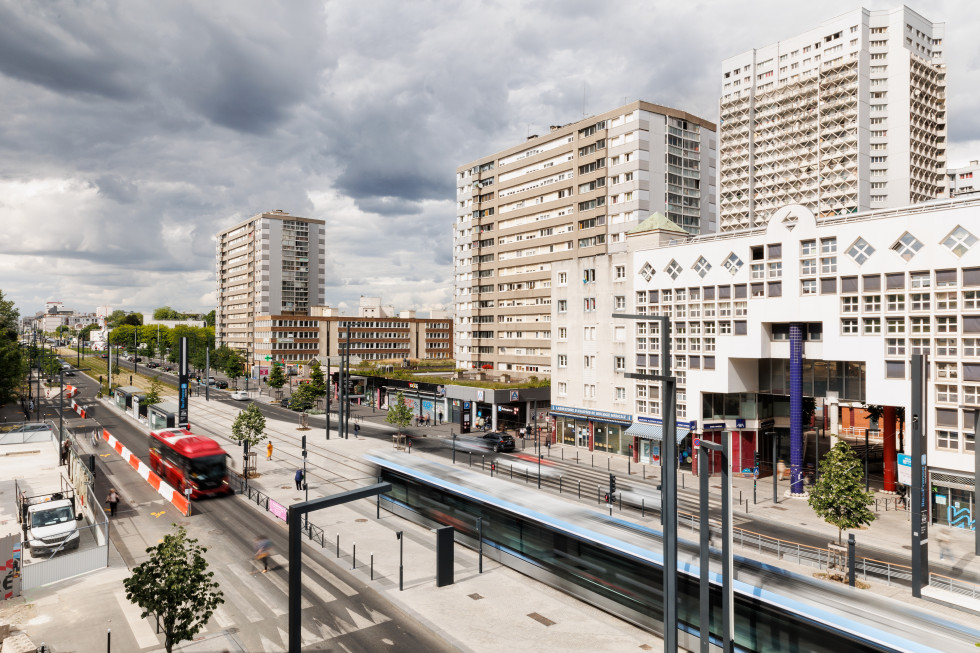Stations designed for passenger comfort
Each Grand Paris Express station will feature its own architectural design that best complements its unique cityscape. They will all share the same goals on sustainability and green design by applying principles such as durable flooring and materials, natural lighting, optimised mass and volumes, and energy efficiency. All of these priorities were defined in the Grand Paris Station Architecture Guidelines written by architects Jacques Ferrier and Pauline Marchetti.
The stations will be accessible for all passengers from concourse to train. Rider comfort will be a priority at every level, from air quality and temperature to quiet systems. And platforms will be made safer with glass doors separating passengers from the tracks.
The stations will come alive and invite the city inside with shops, services and shared spaces. Depending on existing commerce in the area, passengers and residents will have access to local products as well as major retailers.
Art in the Grand Paris Express stations
A collection of over 70 works of contemporary art will go on display once all the lines are commissioned. One artist for each station worked with the architect to create an original artwork. This unprecedented public art commission has attracted artists from all over the world (Japan, Italy, US, Argentina, Spain, Netherlands, Chile, etc.) as well as young French designers.
In conjunction with these works, large-scale illustrations will be done for the station platforms. Société des grands projets is selecting many different types of artists, such as illustrators, animators, cartoonists, manga and comic book artists, digital artists, and press illustrators.
These works will be funded by private patrons and through the support of the Grand Paris Express endowment fund.
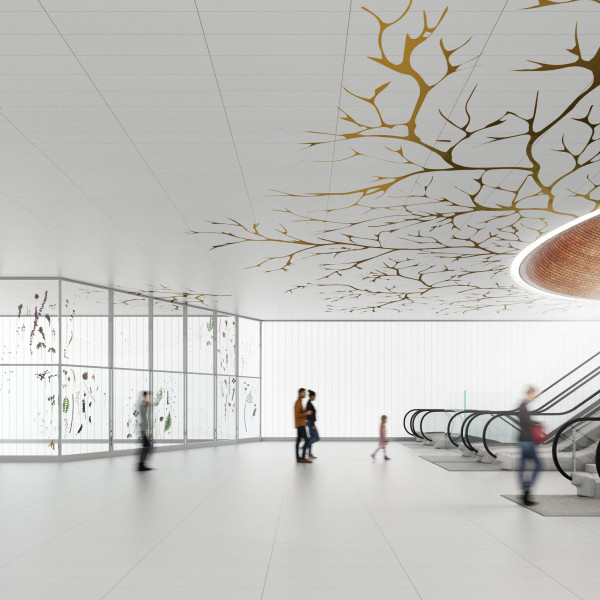
L'œuvre "Empreintes" est réalisée avec le soutien du Fonds de dotation du Grand Paris Express.
© Duy Anh Nhan Duc / Chartier&Dalix / Société des grands projets
Walking and cycling around the stations
You won’t need a car to get to the new metro. In the vicinity of the stations, priority will be given to pedestrians and people using soft modes of transport, like bicycles. The bus system will be rerouted to get as many people as possible to the metro stations.
We worked with local communities and Île-de-France Mobilités to design public spaces near the stations that increase the use of the greenest modes of transport and make it easier for residents of the Greater Paris Area to use them. Making these transformations possible is a joint effort. This takes on a particular urgency considering that the Grand Paris Express will put 98% of the metro area’s residents within 2 km of a station, which is a 10-minute ride by bicycle or bus.
Property development projects for a more diverse and accessible city
Development projects are underway in tandem with the new metro lines, for example at Le Plateau de Saclay. It also forms the bedrock for an urban transformation stretching across the Greater Paris Area that includes new local hubs and a host of modern real estate developments. Société des grands projets is driving this momentum. We are doing this by leveraging the more than 1 million m2 of land acquired to build the metro. By 2030, we will have partnered with local communities to initiate over 100 real estate developments in areas around the stations.
We ultimately hope to create greener, more accessible neighbourhoods where residents, travellers, workers, and students can coexist. The real estate projects will offer a mix of public housing, rental units, and homes for sale. There will be residence halls for students and live-work spaces for artists. Community centres, shops, and residential hotels will also be built as soon as they are economically viable. Ground-floor spaces will be slotted for the non-profit sector.
To design and build these property developments, Société des grands projets instituted a series of ambitious environmental criteria, such as low-carbon impact, energy efficiency, and buildings that are scalable and durable. Since biodiversity is a high priority, we chose to enhance the well-being of residents with measures such as creating green spaces, selecting the appropriate plant species, providing habitats where local fauna can grow, managing rainwater, and offering shaded areas.
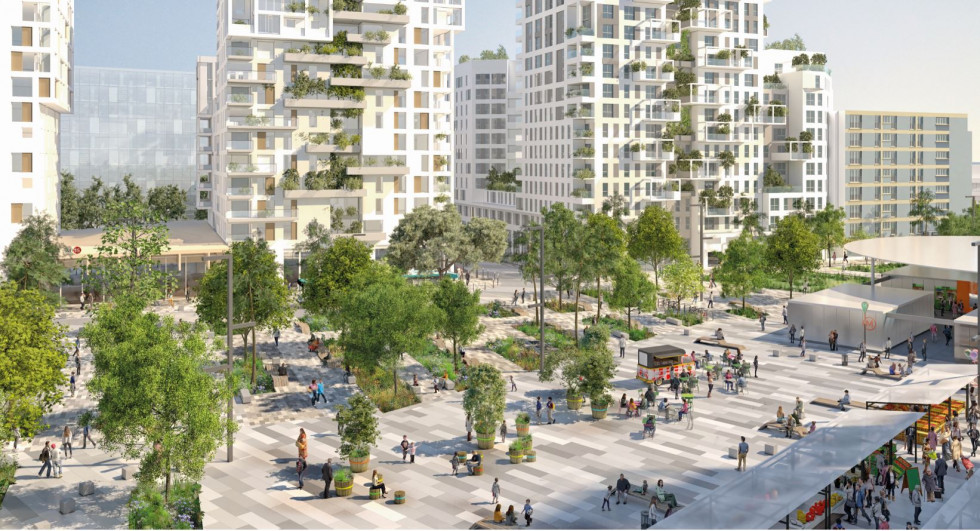
The neighbourhood near the future Bagneux station
© Société des grands projets / Mimram-Brenac
